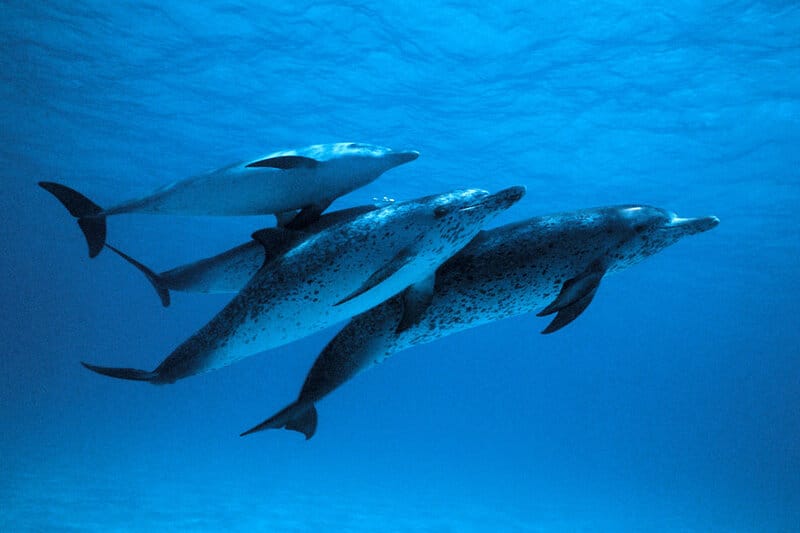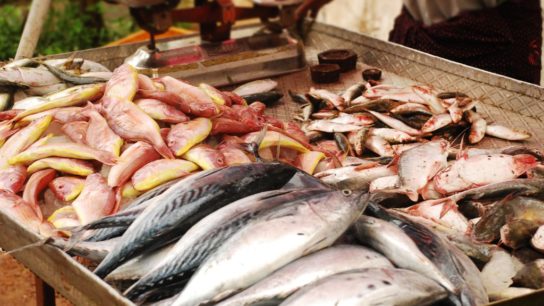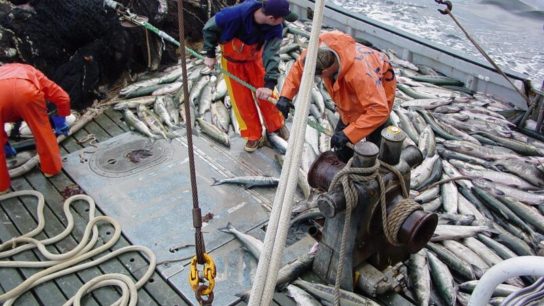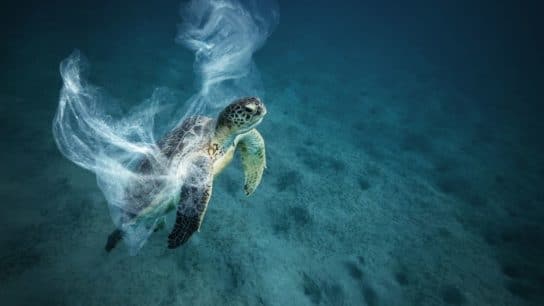Marine mammals stranded on beaches in the southeastern United States died with high levels of pollutants stored in their organs and blubber, researchers reported recently in Frontiers in Marine Science, creating concerns that industrial chemicals are killing rare whales and familiar dolphins.
—
“Marine mammals are like a litmus test for the ecosystem,” said lead author Annie Page-Karjian, clinical veterinarian at Harbor Branch Oceanographic Institute, Florida Atlantic University. “Looking at them and the toxins they’re exposed to gives us a snapshot of what is happening in the marine environment.”
Thousands of chemicals from households, farms and factories quietly enter the ocean every day. Some readily absorb onto bits of another common pollutant: plastic. When mistaken for food by small animals like plankton and anchovies, plastic enters the food chain—along with the chemicals it soaked up.
While the amount of toxins eaten by one anchovy is minuscule, most marine mammals are apex predators, eating hundreds of fish, squid or krill each day. Through a process called bioaccumulation, small amounts of ingested toxins concentrate in carnivores over time, compromising their immune systems and bodily functions.
The researchers collected autopsy data from 83 toothed whales and dolphins that washed up in Florida and North Carolina between 2012 and 2018. They examined 46 bottlenose dolphins (Tursiops truncatus), 21 pygmy sperm whales (Kogia breviceps), and small numbers of animals from nine other species.
The team screened liver and blubber samples for heavy metals like mercury, lead and arsenic. They also checked for Triclosan, an antibiotic used in dozens of household products; Atrazine, an herbicide used on corn and sugarcane fields; and a handful of plasticizing chemicals such as BPA and NPE, found in countless products from food containers to clothing.
“We found some of the highest mercury concentrations that have ever been reported in any living thing anywhere, ever,” Page-Karjian told Mongabay. Two bottlenose dolphins found stranded in Waves, North Carolina, and North Palm Beach, Florida, had more than 1,400 micrograms of mercury per gram of tissue (1,400 parts per million) in their livers. Just 10 parts per million of mercury can cause neurological damage in human fetuses.
Besides toxins in their tissues, every animal had a number of physical maladies including kidney deterioration, thyroid tumors and chronic liver disease. “A lot of these [ailments] can be caused by stranding or shock, but they can also be caused by toxin exposure,” said Page-Karjian.
Veterinarians traditionally record pathological data during autopsies, but they don’t usually test for toxins. The authors believe there’s value in looking at both. Even if the toxins aren’t the direct cause of death, explained Page-Karjian, they “could have led to the animal’s demise.”
However, it’s difficult to prove that the pollutants killed the animals, said Kathleen Colegrove, a clinical professor of zoological pathology at the University of Illinois. “The authors did a great job in really trying not to make that jump,” she told Mongabay.
You might also like: Ocean Acidification Linked to Plastic Pollution- Study
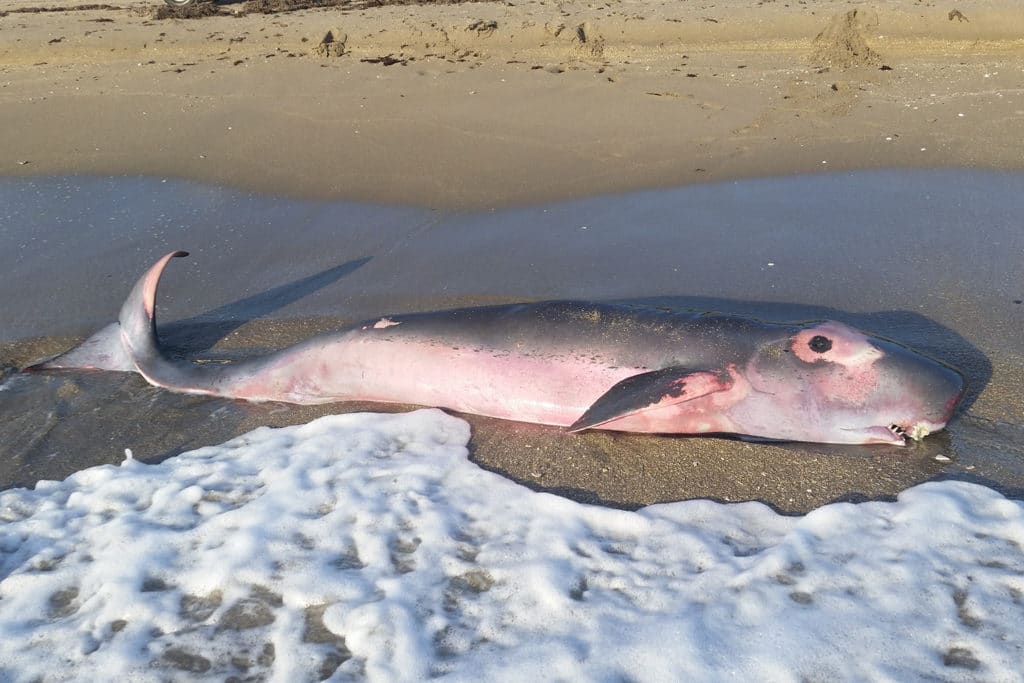
Nine of the 15 pygmy sperm whales (Kogia breviceps) autopsied for the study were emaciated when they died, zero were considered to be in ‘robust’ condition. Photo Credit: Inwater Research Group
One species included in the six-year project, the Gervais’ beaked whale (Mesoplodon europaeus), is so elusive only a few people have ever seen them alive. “[This study] had three species of beaked whales, which is amazing because those animals rarely strand,” said Colegrove, who was not involved in the study.
Many offshore species like the Gervais’ beaked whale spend their lives thousands of kilometers from shore, foraging thousands of meters underwater. And yet, evidence shows they contain potentially lethal levels of industrial chemicals, suggesting the hazards of ocean pollution reach farther than we thought.
The study is an effective first step toward broadening our understanding of chemical contamination in offshore species, Colegrove said. She added that the report “will set up future studies to take a finer-tuned look” at how pollution affects some of the ocean’s least-studied mammals.
This article was originally published on Mongabay, written by Cypress Hansen, and is republished here as part of an editorial partnership with Earth.Org.








